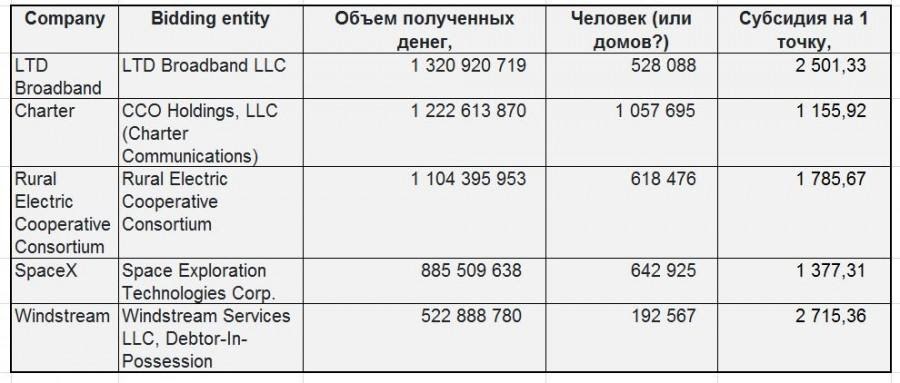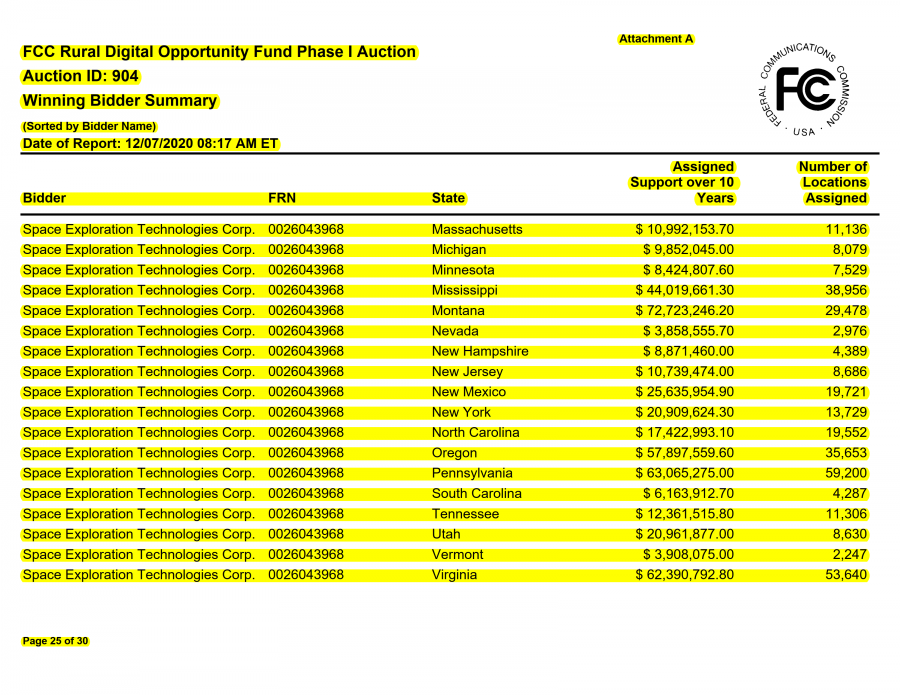I suggest that you familiarize yourself with the previously posted materials on the Starlink (SL)
project : Part 1. The birth of the project ‣ Part 2. SL network ‣ Part 3. Ground complex ‣ Part 4. Subscriber terminal ‣ Part 5. State of the SL grouping and closed beta testing ‣ Part 6. Beta-testing and service for customers ‣ Part 7. Bandwidth SL and RDOF program network ‣ Part 8. Installation and inclusion of subscriber terminal ‣ Part 9 service in markets outside the US ‣ Part 10. SL and the Pentagon ‣ Part 11. SL and astronomers ‣ Part 12. Space debris problems ‣ Part 13. The satellite network latency and access to radio spectrum ‣ Part 14. The inter-satellite communication channels ‣ Part 15 Rules of Service ‣ Part 16. SL and weather ‣ Part 17. Second generation SL ‣ Part 18. SL on COTM market ‣ Part 19. What SL has in the future ‣ Part 20. Interior of the SL terminal ‣ Part 21. SL and polarization problems ‣ Part 22. EMC problems with other satellites.
We have already touched on the topic of the RDOF program , which I would recommend to familiarize yourself with before reading this article.
So the FSS has published the results of the distribution of grants based on the results of the RDOF auction.
Who got how much money:
Space Exploration Technologies Corp. will receive $ 885.5 million for connecting 642,925 people (or houses), and both one family and hundreds of people (if there are experts, let them correct me) can live there in 35 US states. On the one hand, this is a huge success for SpaceX, on the other hand, it could formally claim all the billions of the Competition, but the FSS gave it less than 10% of the allocated amount.
Here are the top five winners and the cost per point:

As you can see, SpaceX had to practically dump (their offer is one of the cheapest).
Here is a map of the United States with marks of the speed the winners promised. Apparently, the red dots are SpaceX.

In general, the FSS, having knocked their heads against several hundred operators, managed to save huge money: instead of the 16 billion allocated by the FSS for connecting rural areas, the Providers agreed to do this work for 9.2 billion. At the same time, 5.2 million people will be provided with the Internet ...
In addition to SpaceX, 2 other real-life satellite operators participated in the competition - Hughes (possibly paired with Oneweb) and ViaSat (which also has plans for low-orbit satellite broadband). SpaceX literally crushed them: Viasat left with nothing at all, Hughes was allocated 1.27 million to connect 3,678 homes in 1 state (Rhode Island), although Hughes claimed 535,000 homes. Viasat, who claimed 447 thousand connections, received nothing at all - his applications went to phase 2 of the project.
Here are the states SpaceX won, and how many subscribers it will receive and for what money:

and also here:

That is, they did not encroach on the southern states along the border with Mexico - there is no Florida, no Texas, no New Mexico, no California.
While this is definitely a triumph for SpaceX, you shouldn't expect money right now. Operators are now required by January 29, 2021 to submit to the FSS a draft of the proposed technology and network diagram for each state in which the winning bids were submitted, and companies cannot comment before this deadline. After verification, it is possible that some offers from providers will be rejected, and these points will be played again ...
In addition, SpaceX can come to get money after 2 years of service. As I understand it, the countdown of these 2 years has not even begun yet, because beta testing is not a public provision of a service, since a public offer is needed for all residents of district X, and not a "closed club" option.
Still wondering at what cost SpaceX won at these points? As I understand it, one of the elements of the request was the price for the service. SpaceX offered 100/20 Mbps and more than 2 TB of traffic, apparently, the price is the same $ 99. In general, 2 Terabytes is VERY MUCH, it is almost impossible to pump out so much, if you do not sit constantly in virtual reality ... Here all the hope is that the typical traffic volume is now less than 300 Gigabytes per month, but the traffic is constantly growing, and pumps can become a burden ...
Note that the money is allocated for 10 years, and it is distributed over time, although most likely unevenly - after the Provider completes the connection work, it should logically receive most of the money.
As the winning Operator, SpaceX has to install a terminal at the subscriber at its own expense (otherwise, it turns out that the Cable Operator can send the subscriber a coil of cable with a note: "Well, you unwind it there and dig it to my box there at the edge ..")
This is my version , but the provider's standard of connection is an access point in the house, not a router by mail. And connection fees are now zero for terrestrial providers in the US.
Moreover, the search for the installation site and visibility to the satellite should not interest the subscriber. If the provider applied for the tender, all technical problems, for example, the payment for the passage through someone else's site - this is his problem. In the case of SpaceX, this is the transfer of the terminal, and its installation, even on the roof, even on the mast ... I would interpret this way at the FCC site ... If this is so, then the costs of the installer and the terminal sit inside these 1,300 dollars, which reduces the project's margins, but does not diminish its importance and prospects
And there is one fly in the ointment in the RDOF competition for SpaceX. Before this competition, there were 5.5 million subscribers of SpaceX potential customers in the United States, he could provide them with the Internet, while the costs of these subscribers would be in the region of 700-800 dollars, that is, not very critical. And now, thanks to this competition, 90% of these subscribers will go to other (ground-based providers), that is, in fact, the FSS has deprived SpaceX of several million of its potential subscribers ...
On January 28, Space X sent a request to the FCC with the Federal Commission in connection with a request to issue SpaceX a license for Eligible Telecommunications Carrier ("ETC"). Apparently this is an analogue of our license for the right to provide communication services.
From the curious: SpaceX claims that it will provide RDOF subscribers with a speed of 100/20 Mbit and a latency of 31 ms in 95% of the service time ...
Of interest - the network diagram (very rough) and an indication that the calculation of which satellite will work with a specific terminal and gateway , occurs on the network every 15 seconds. At the same time, 2 facts are clearly recorded: the gateways are necessarily connected to the fiber-optic communication line, and the Network Management Center (in the document it is listed as networks,) and not the gateway, terminal or satellite is engaged in management ...
SpaceX has tested the operation of IP telephony in its network, and will apply to the terminal for all subscribers under the RDOF program for the rural Internet also a battery pack that can guarantee 24 hours of operation of the satellite terminal in case of natural disasters and loss of electricity from the subscriber.
SpaceX is required to configure its ground network so that each RDOF subscriber gets a local county code number so that 911 immediately recognizes that he is local and from which county, although his call will most likely land in another state, but will be processed at all possibly somewhere in the state of Washington. SpaceX will give the subscriber N-minutes of free local traffic (if the State has such rules), for certain low-income citizens there will be special low rates and other bunch of requirements for telecom operators, which have been accumulated in each state of the United States over 100 years of telephone communication ...
For this SpaceX will have to conclude dozens of contracts with local telephone companies (IMHO this is a lot of paperwork, but they most likely will not be able to blackmail him).